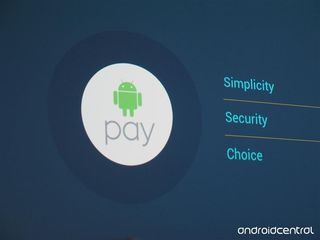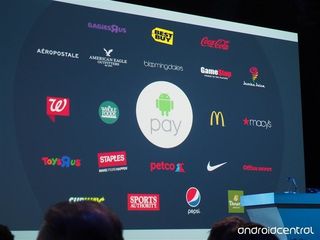Google Wallet isn't being completely replaced by Android Pay, but big changes are coming

Android Pay is a new initiative from Google that seems to be a more comprehensive effort at a payments system, hitting key points and features that Google Wallet never did. With Android Pay, you'll be able to have multiple debit and credit cards associated with your Google Account to make payments in stores, online and within apps. Most importantly Android Pay is supported by the top three of the four big U.S. carriers, payment processors and banks, while keeping your information secure with new mechanisms.
Wait, that sounds like a lot like Google Wallet, right? Yes, but that doesn't mean that Wallet is going away — things are going to change a bit, though.
While all of the hype is swirling around Android Pay — and rightfully so, it seems like a good platform from what we've seen — the Google Wallet Google+ account posted an interesting message clarifying what's happening to that other Google payment system. The post focuses on the high (and increasing) adoption of the Google Wallet feature that lets you send and receive money with other people through the Wallet app and Gmail, and says that going forward that's what Google Wallet is going to be all about.

A new version of the Google Wallet app is coming this year with a focus on these person-to-person transfers, and the post mentions that it'll still be easy for people to send money for free in the U.S. using a debit card (no mention of credit cards here) in minutes. The money will be able to be deposited into a bank account or spent with a physical Google Wallet card (remember those?). You can already do all of that with the current Wallet app — but this seems to indicate that everything else is going away. With the focus on personal money transfers and a physical Google Wallet card, it lets the fancy new brand of Android Pay take care of the rest.
As announced today, Android Pay already has the capability to replace pretty much all of Wallet's current functionality, including managing multiple payment types and sources, as well as taking payments in a variety of situations and apps. Android Pay seems to have a better grasp of how to manage payments in stores as well, and while it relies on the same NFC terminals as Wallet, the system of "funding" your account and making a payment via a virtual MasterCard are gone — you'll now be making a direct payment to the store from your credit or debit card. It's a better system, and hopefully this time around with proper infrastructure and partnerships it'll actually work.
If you're still confused about the situation right now, you can join the club — Google unfortunately hasn't been too clear about where Wallet will stand as Android Pay launches in full. As we can tell now, Android Pay is going to take over nearly all of what Wallet currently does as a second attempt at creating an all-encompassing payment system for Google, leaving Wallet to be a much more narrowly focused app. We'll see how that works out this year.
Source: +Google Wallet
Be an expert in 5 minutes
Get the latest news from Android Central, your trusted companion in the world of Android
Andrew was an Executive Editor, U.S. at Android Central between 2012 and 2020.

